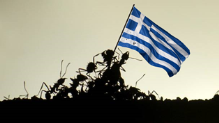You are here
Formicidae
Leptothorax Mayr, 1855
EOL Text
Genus Leptothorax Mayr HNS
Most species formerly placed in this genus have been reassigned to Nesomyrmex HNS and Temnothorax HNS , leaving Leptothorax HNS much more narrowly and precisely circumscribed (Bolton 2003). Nevertheless, the species-level taxonomy of the North American Leptothorax HNS remains in a state of chaos. There are at least two species in California: one can be easily identified as L. calderoni HNS (see “Taxonomic Changes” above), while the remaining collections -here assigned the code name Leptothorax HNS sp. CA-01 -cannot be identified with certainty. They belong to the muscorum-complex HNS , which is widespread in temperate North America and Eurasia, and within which species limits are ill-defined. References: Bolton (2003), Brown (1955a), Buschinger and Heinze (1993), Cole (1954d), Creighton (1950a), Douwes and Stille (1987), Francoeur (1986b), Francoeur et al. (1985), Heinze (1989b, 1991, 1998), Heinze et al. (1996), Loiselle et al. (1990), Möglich (1979).
- Ward, P. S. (2005): A synoptic review of the ants of California (Hymenoptera: Formicidae). Zootaxa 936, 1-68: 33-33, URL:http://antbase.org/ants/publications/21008/21008.pdf
| License | Public Domain |
| Rights holder/Author | No known copyright restrictions apply. See Agosti, D., Egloff, W., 2009. Taxonomic information exchange and copyright: the Plazi approach. BMC Research Notes 2009, 2:53 for further explanation. |
| Source | http://treatment.plazi.org/id/11E973901E03CA80F3DE2B09E45E317A |
Represents one or more species in the muscorum complex.
| License | |
| Rights holder/Author | No known copyright restrictions |
| Source | http://antbase.org/ants/publications/21008/21008.pdf |
Most species formerly placed in this genus have been reassigned to Nesomyrmex and Temnothorax , leaving Leptothorax much more narrowly and precisely circumscribed (Bolton 2003). Nevertheless, the species-level taxonomy of the North American Leptothorax remains in a state of chaos. There are at least two species in California: one can be easily identified as L. calderoni (see “Taxonomic Changes” above), while the remaining collections -here assigned the code name Leptothorax sp. CA-01 -cannot be identified with certainty. They belong to the muscorum-complex , which is widespread in temperate North America and Eurasia, and within which species limits are ill-defined. References: Bolton (2003), Brown (1955a), Buschinger and Heinze (1993), Cole (1954d), Creighton (1950a), Douwes and Stille (1987), Francoeur (1986b), Francoeur et al. (1985), Heinze (1989b, 1991, 1998), Heinze et al. (1996), Loiselle et al. (1990), Möglich (1979).
| License | |
| Rights holder/Author | No known copyright restrictions |
| Source | http://antbase.org/ants/publications/21008/21008.pdf |
Les genres Leptothorax et Temnothorax ne peuvent plus êtreséparés , les deux espècesnigrita Emery et Delapartin. sp. formant toutes les transitions possibles du premier au second, tant par la massue des antennes que par la forme de plus en plus renflée et élevée du devant du thorax par rapport au métanotum , que par les poils du corps de plus en plus longs et pointus, que par le pétiole de plus en plus long du 1er article du pédicule et que par la forme de plus en plus grêle du corps et des membres. Le Leptoth . nigrita est encore un Leptothorax , mais le L. Delaparti est au moins autant Temnothorax que Leptothorax , tout en étanttrès voisin du nigrita . On peut conserver les Temnothorax comme sous-genre en laissant la position du Delapartiindécise . Le L. nigrita se distingue déjà des autres Leptothorax par la massue plus grêle de ses antennes, par son thorax plus élevé et plus voûté dans sa moitiéantérieure , par ses poils à peine dentelés et simplement obtus, non claviformes, par la portion antérieure plus allongée du 1er nœud de son pédicule .
Chez le L. Rottenbergi , le premier nœud du pédicule est aussi longuement pétiole et surtout arrondi et épaisderrière ; mais à tous les autres égards , c'est un pur Leptothorax .
Ces faits me font penser que mon Aphaenogaster (?) Schaufussi (Nunquam otiosus, 1879) est un Leptothorax .
| License | |
| Rights holder/Author | No known copyright restrictions |
| Source | http://antbase.org/ants/publications/3926/3926.pdf |
Nests are dynamic: Temnothorax ants
The colonies of Temnothorax ants adjust to colony growth or dimunition by shedding and reconstructing their nests.
"The ontogeny of wall building by colonies of the ant Temnothorax [formerly Leptothorax] albipennis involves discontinuous rebuilding events that are reminiscent of moulting in insects…Our results suggest for the first time that history influences wall building in ants when worker density decreases (e.g. with colony diminution) as well as when it increases (e.g. with colony growth) as shown by earlier work. Furthermore, we found that ants used a greater number of the larger building blocks (big sand grains) both after cavity expansion and, more surprisingly, also after cavity contraction. The pattern of nest 'moulting' we experimentally manipulated and analysed should provide insights into possible trade-offs between the various functions and structural properties of the nest that these animals may have to optimize." (Aleksiev et al. 2007:567)
Learn more about this functional adaptation.
- Aleksiev, A.S.; Sendova-Franks, A.B.; Franks, N.R. 2007. Nest ‘moulting’ in the ant Temnothorax albipennis. Animal Behaviour. 74: 567-575.
| License | http://creativecommons.org/licenses/by-nc/3.0/ |
| Rights holder/Author | (c) 2008-2009 The Biomimicry Institute |
| Source | http://www.asknature.org/strategy/c2b041c9e4b7b73dab1a95a9fd2cbdd0 |
Barcode of Life Data Systems (BOLD) Stats
Specimen Records:699
Specimens with Sequences:571
Specimens with Barcodes:495
Species:29
Species With Barcodes:19
Public Records:394
Public Species:8
Public BINs:8
Barcode of Life Data Systems (BOLDS) Stats
Public Records: 0
Specimens with Barcodes: 5
Species With Barcodes: 1
Barcode of Life Data Systems (BOLDS) Stats
Public Records: 0
Specimens with Barcodes: 1
Species With Barcodes: 1
Barcode of Life Data Systems (BOLDS) Stats
Public Records: 0
Specimens with Barcodes: 1
Species With Barcodes: 1
